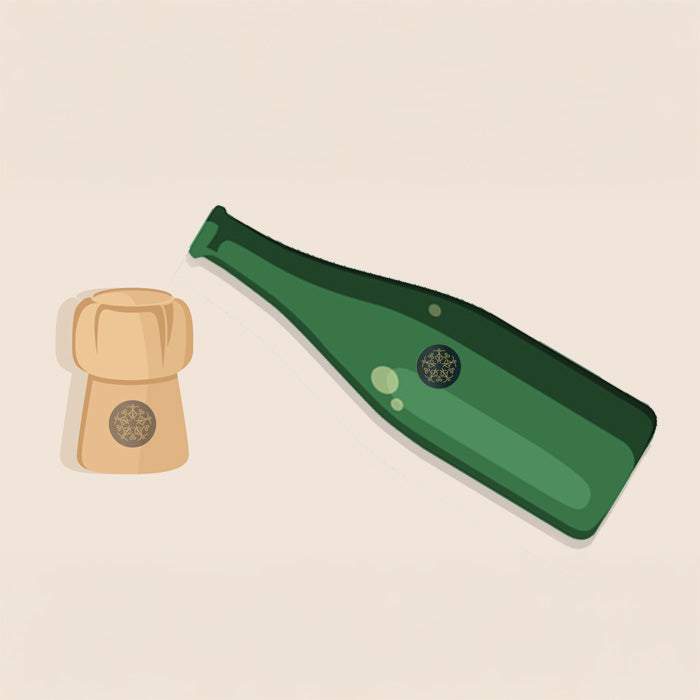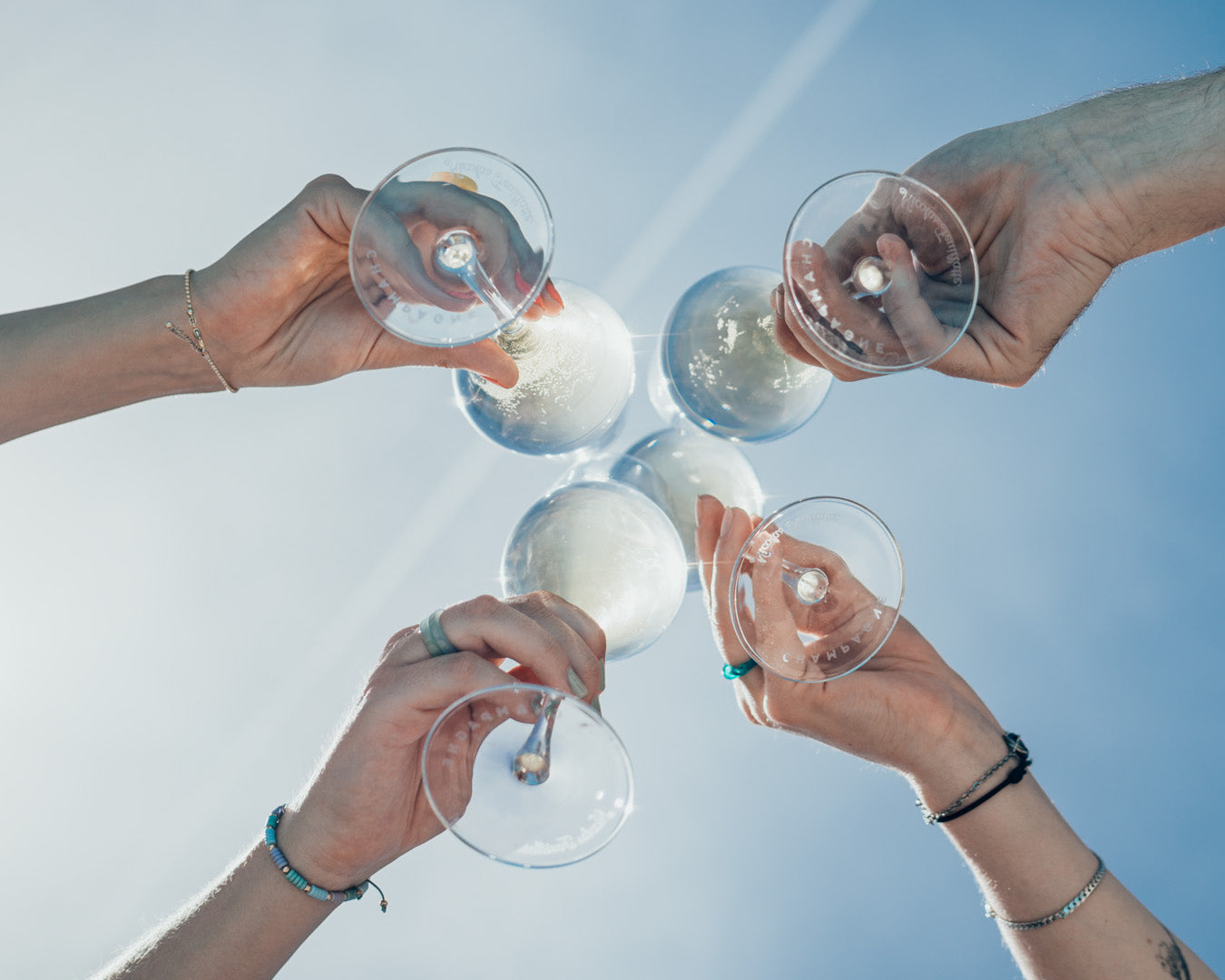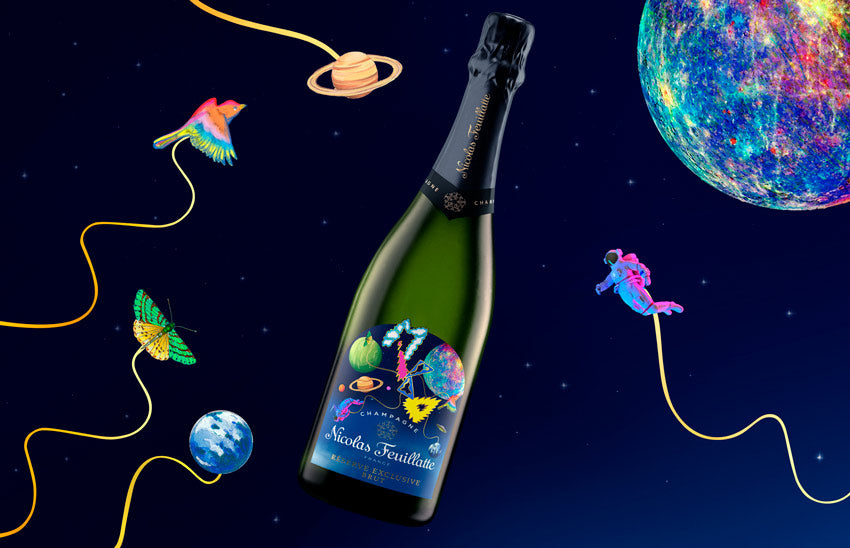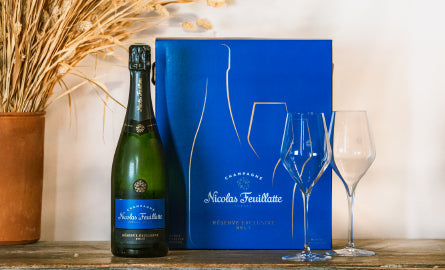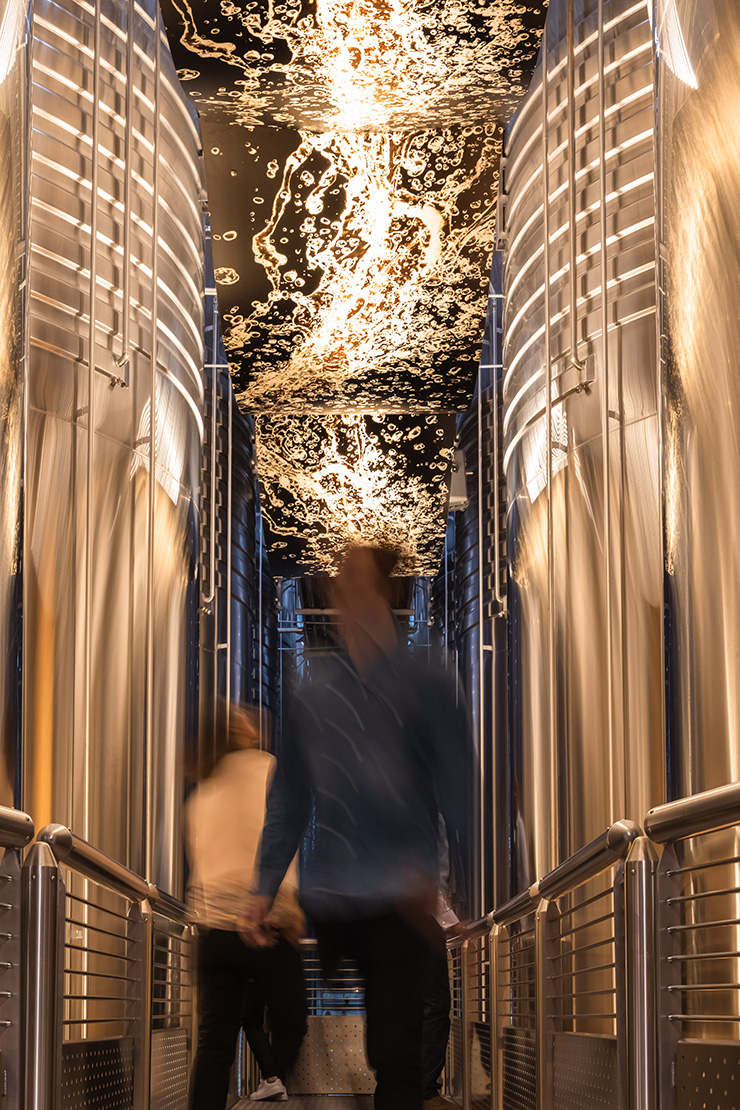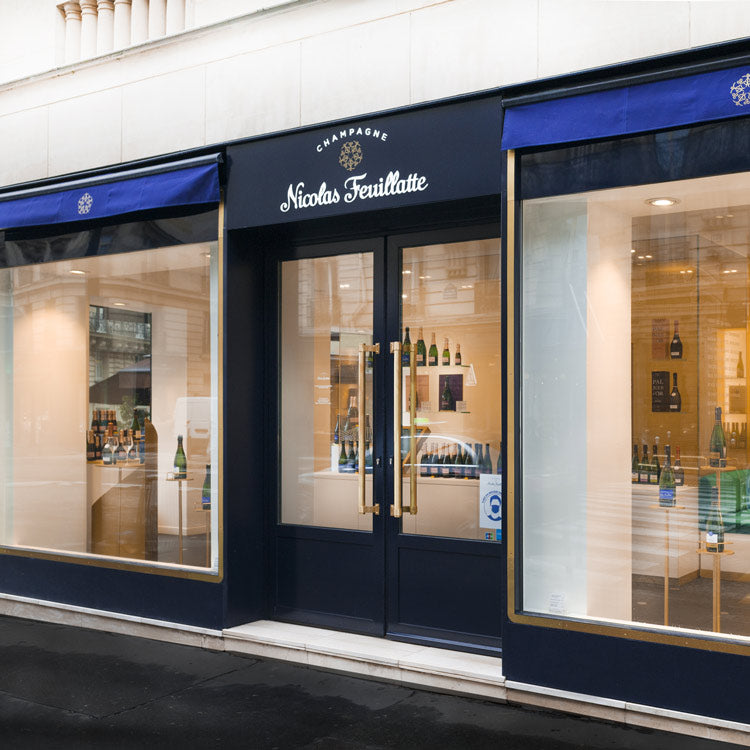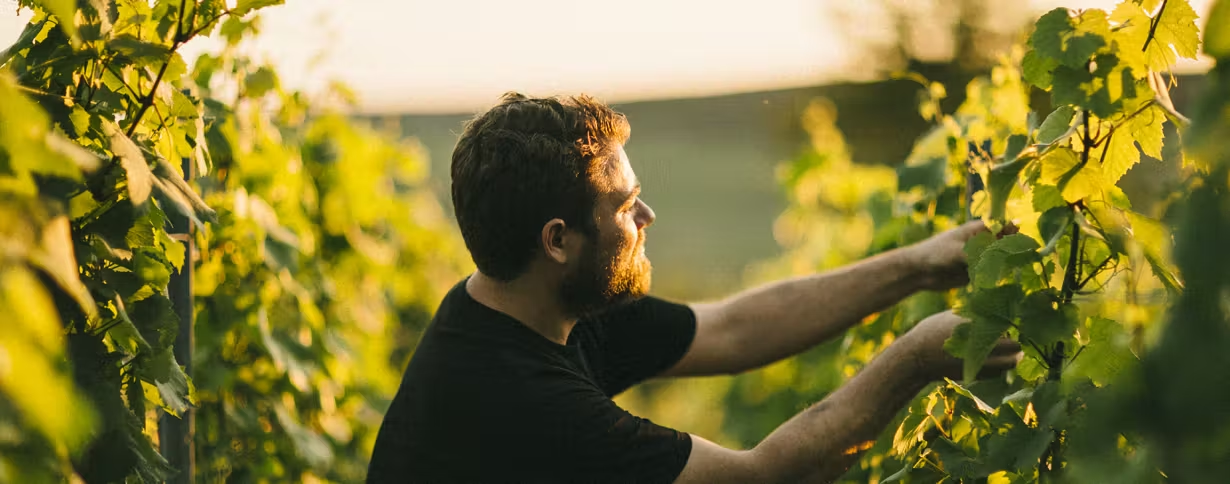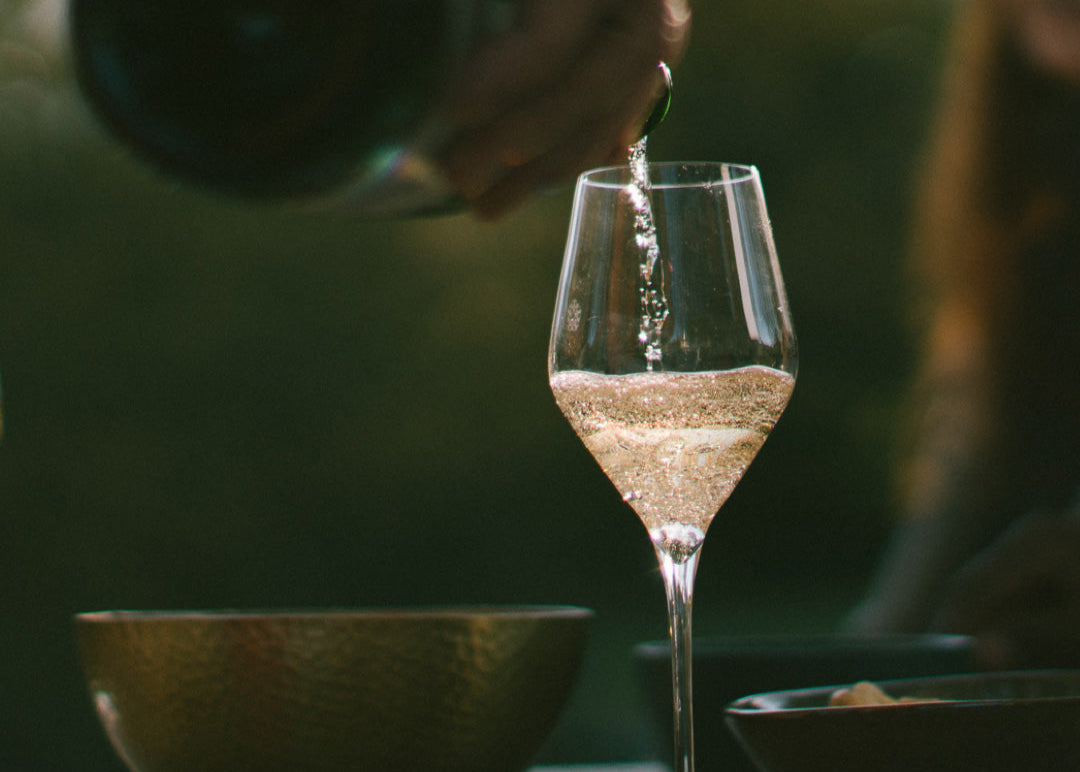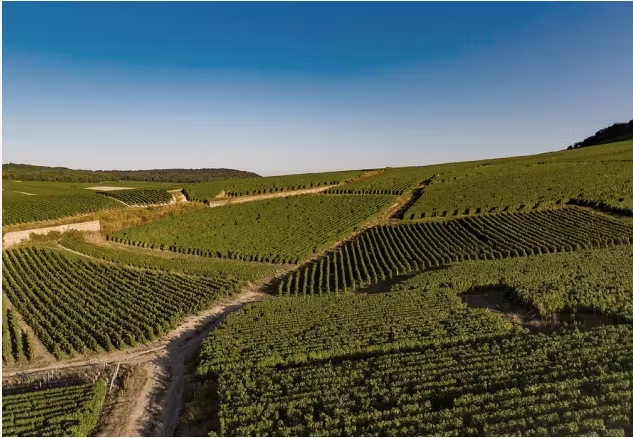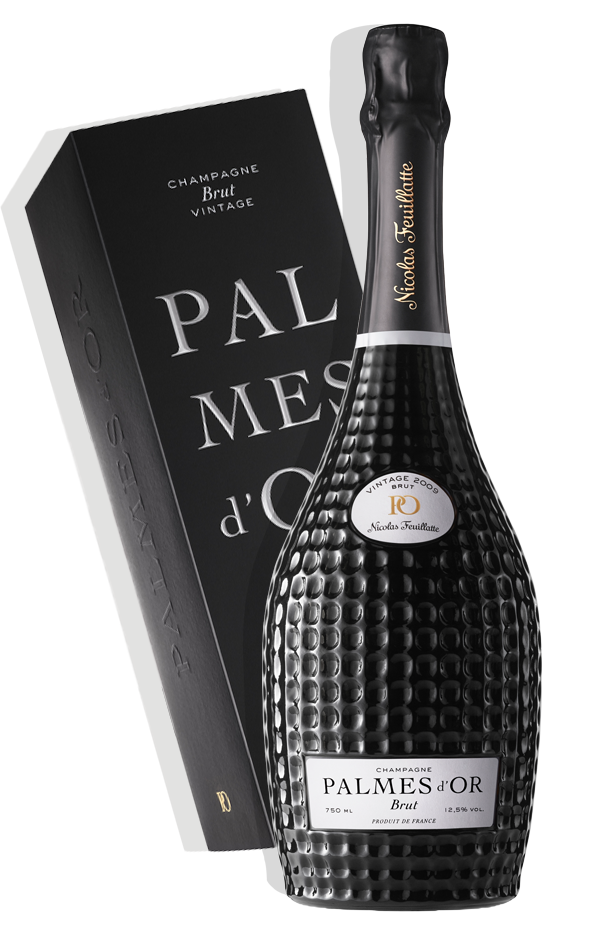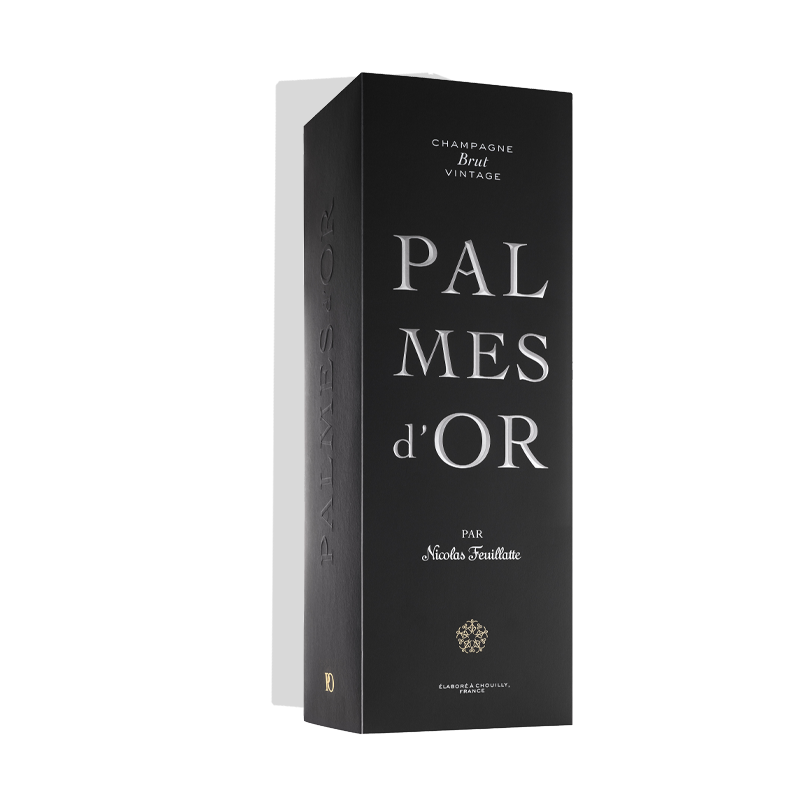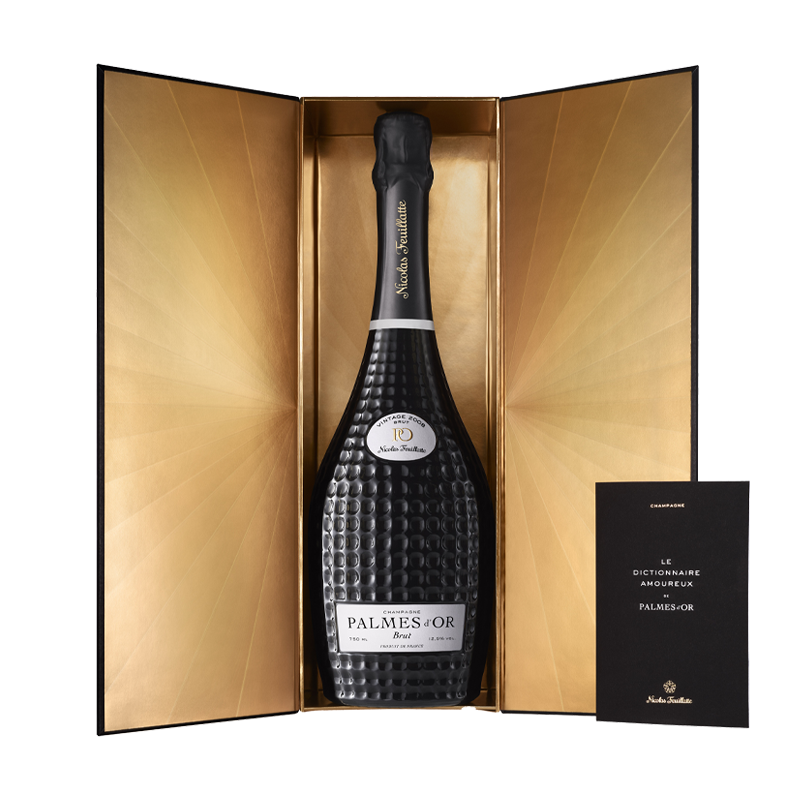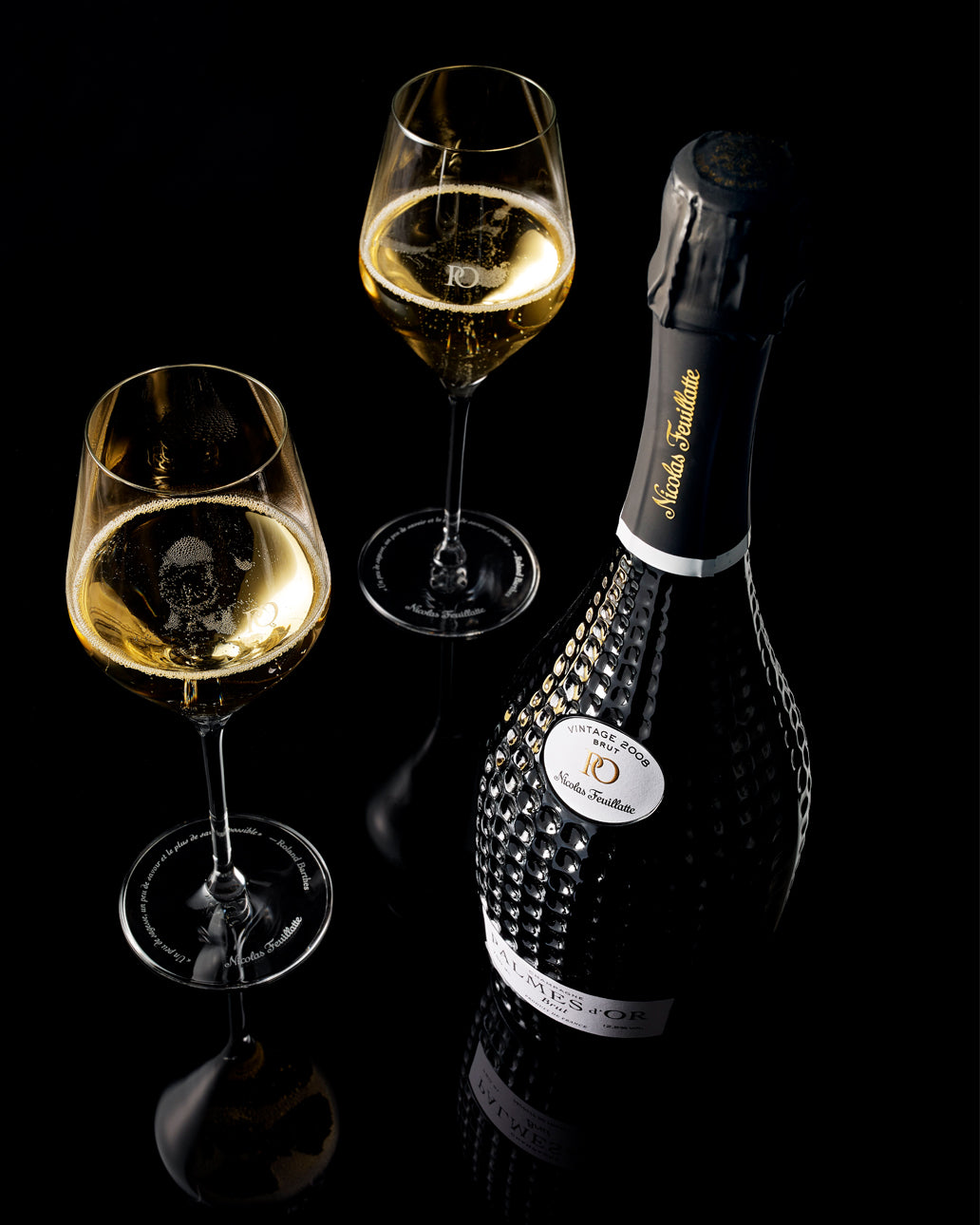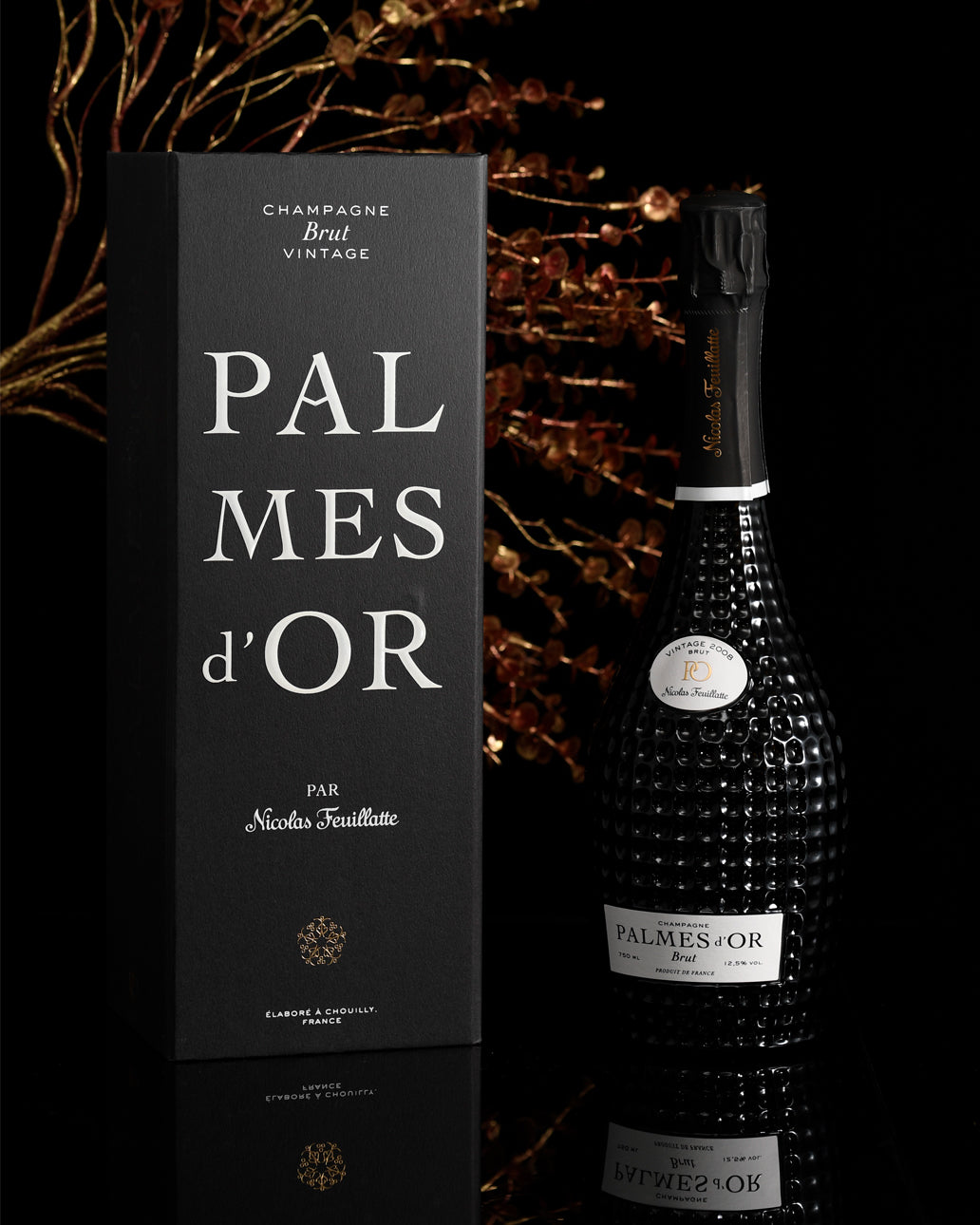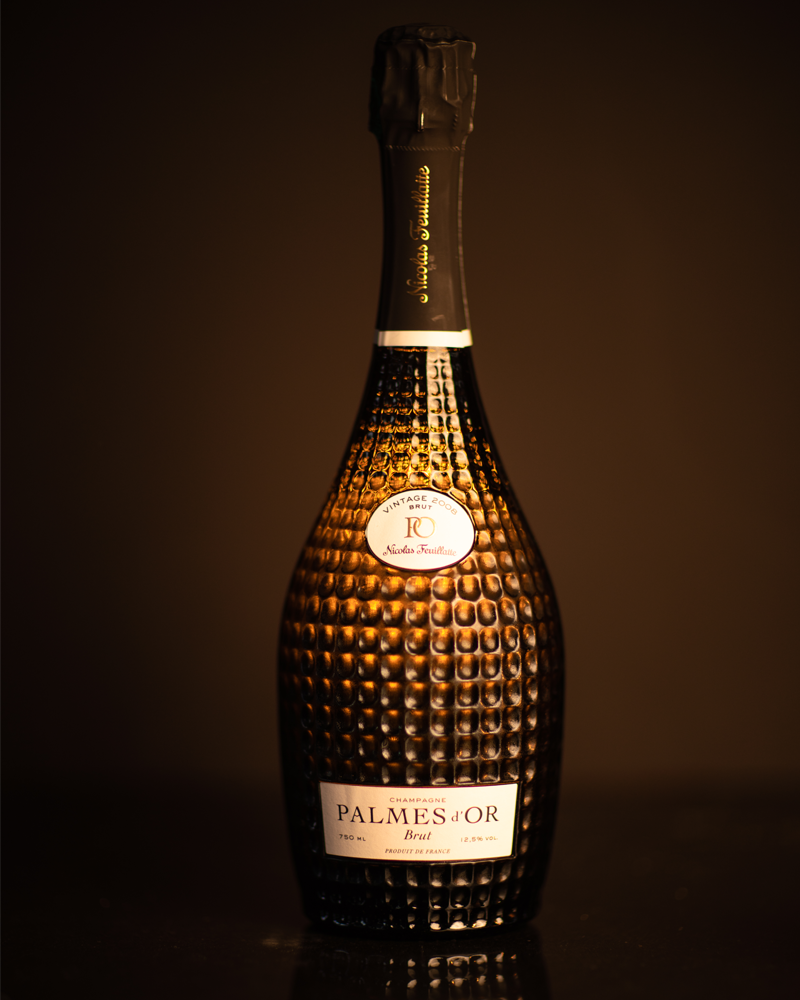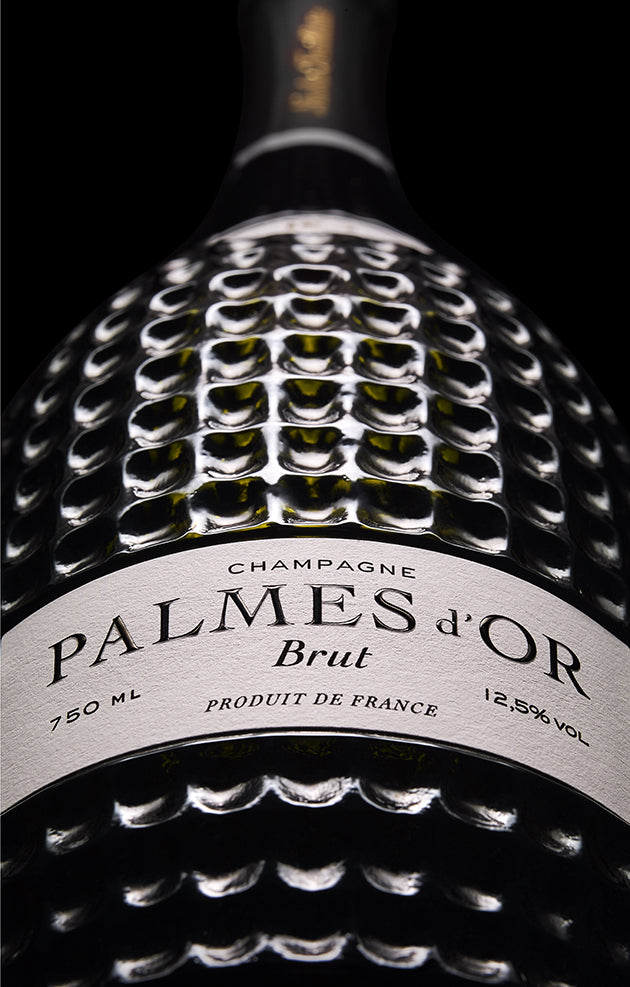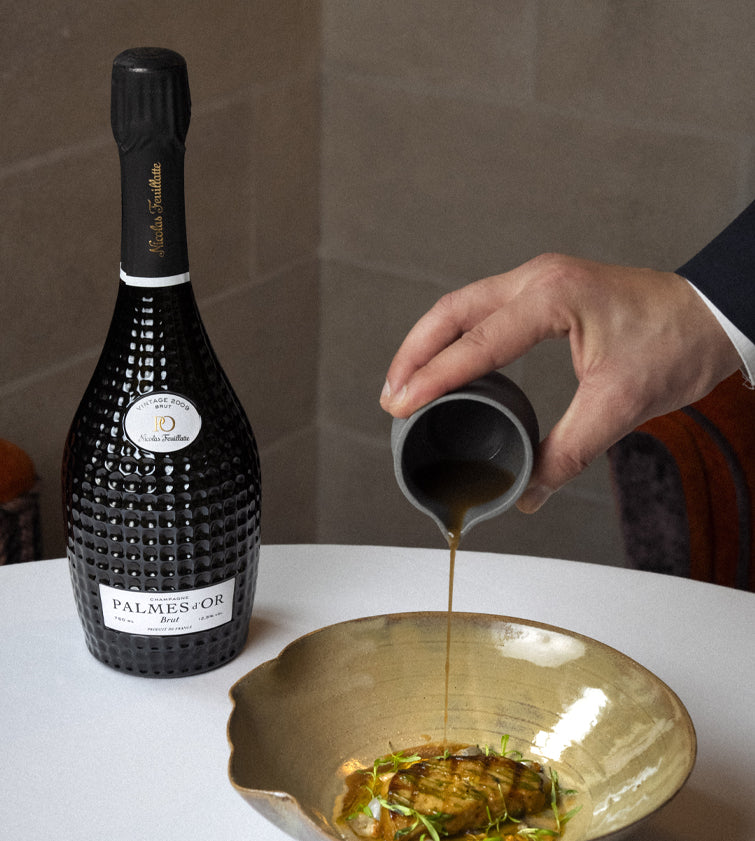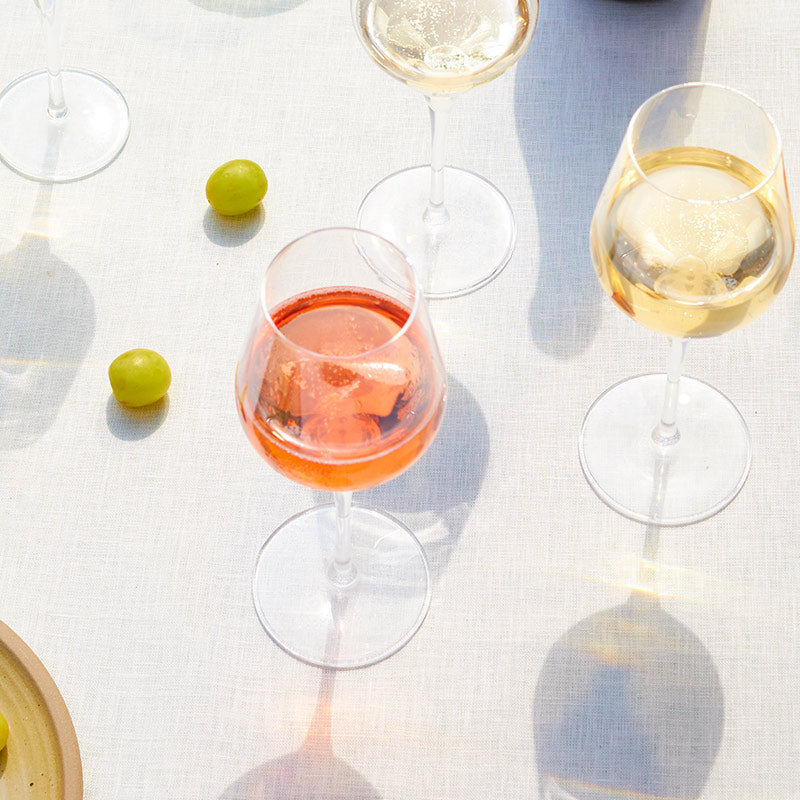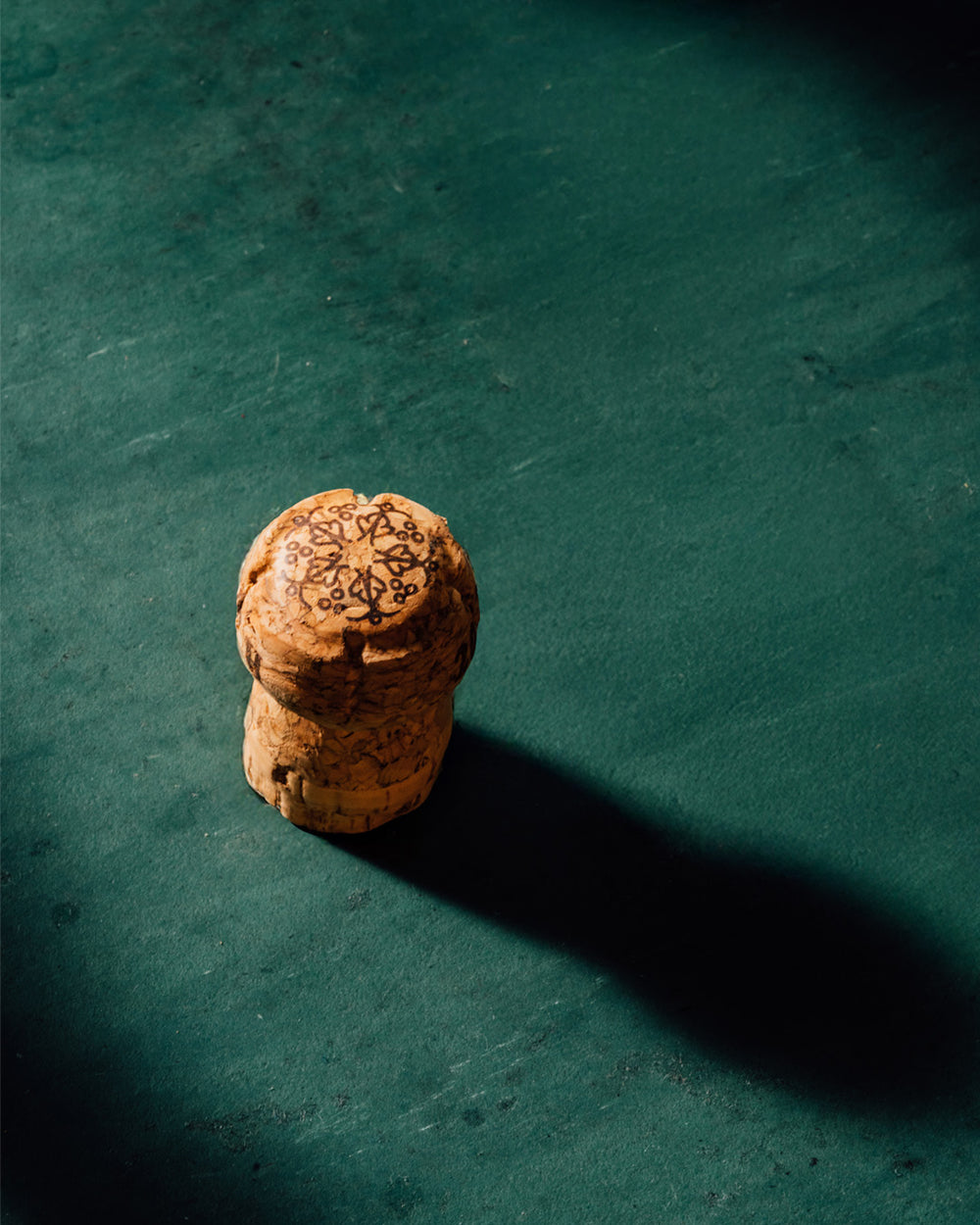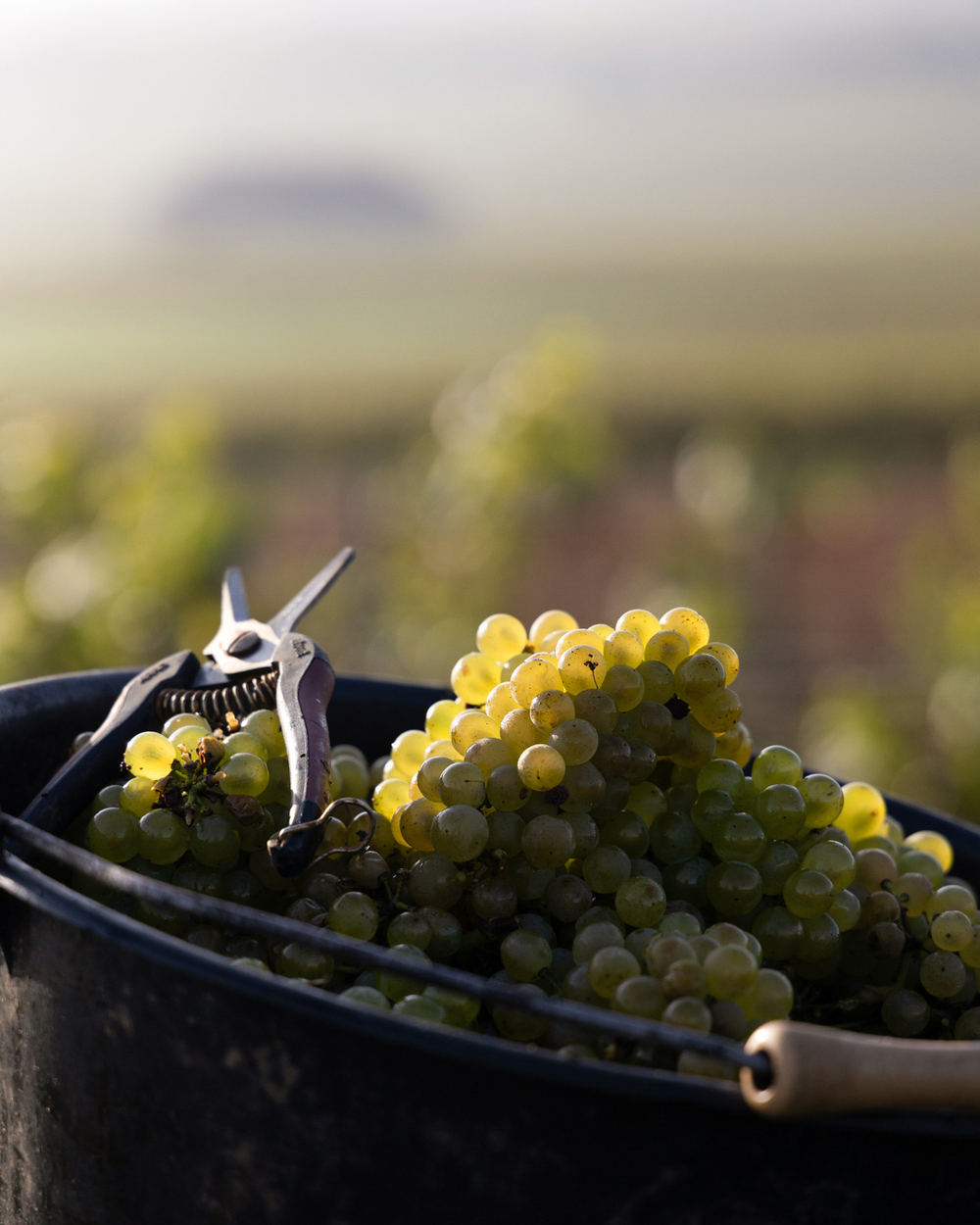An equal part-blend of two iconic Champagne grape varieties, Palmes d’Or Brut is the unique alliance of the most expressive grapes from a single harvest year and the mastery of Chief
Winemaker Guillaume Roffiaen.
For this high-ranking head-to-head, the Grand Crus from the Côte des Blancs and Montagne de Reims enter the ring. Selected for their freshness,
elegant, gossamer-light, distinguished Chardonnays from Avize, Oger, Cramant and Mesnil-sur-Oger vie with fleshy, broad-shouldered Pinot Noir from Ambonnay, Tours-sur-Marne, Aÿ-Champagne, Verzy and Verzenay.
For longer than a decade, a silent confrontation between grape variety and birthplace has been at play. In this subtle battle, where each grape seeks
to shape its strength and character, the diplomatic Chardonnay from the south of the Appellation enters the field.
Elegant and refined, Chardonnay from Montgueux is the obvious mediator in this discord. Bringing greater soul to this prestige cuvée, its unusual
exotic fruit flavours temper acidity and impart harmony and balance to the heart of this dual.
Rosé de Saignée, 100% Pinot Noir, a blend of the delicately spicy Grands Crus of Bouzy and the intense fruitiness of Les Riceys.
Aged in the cellar for nearly ten years.
Excellent aging potential.
